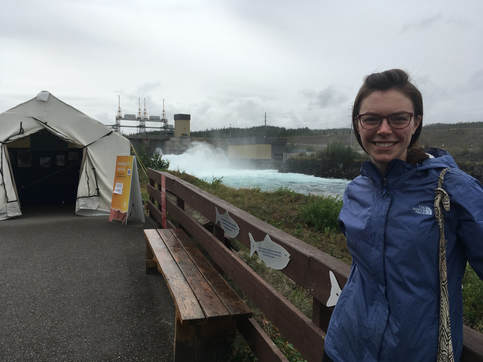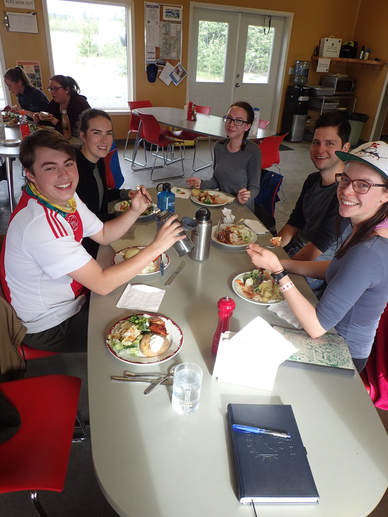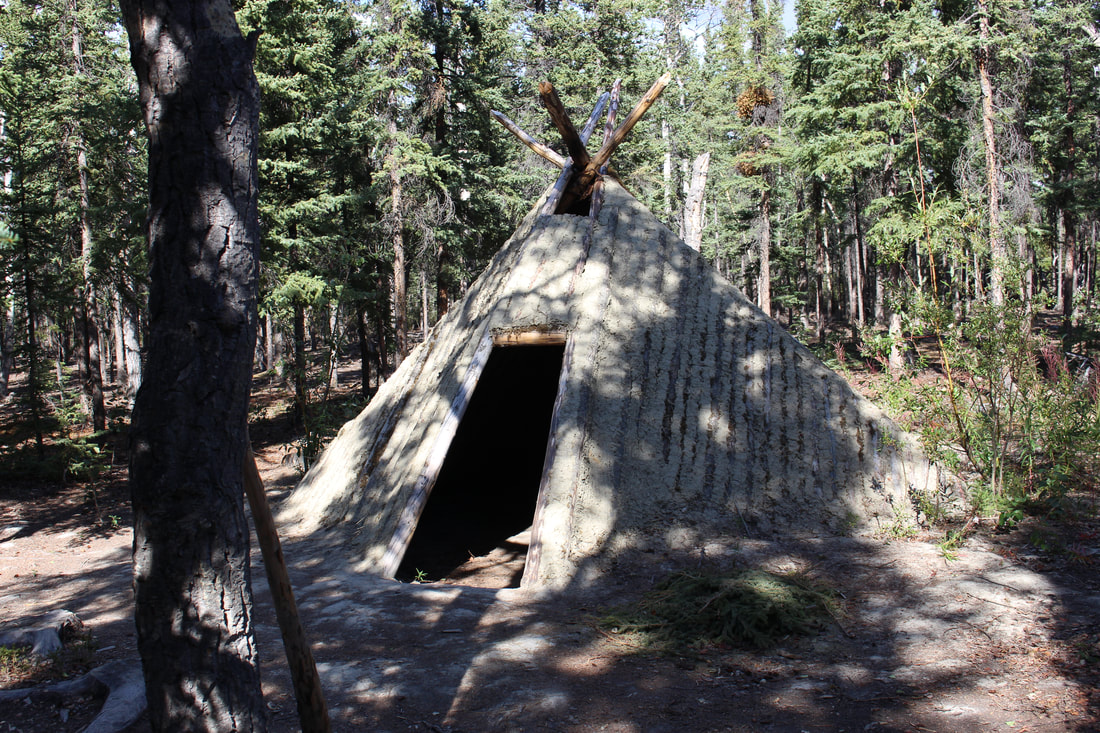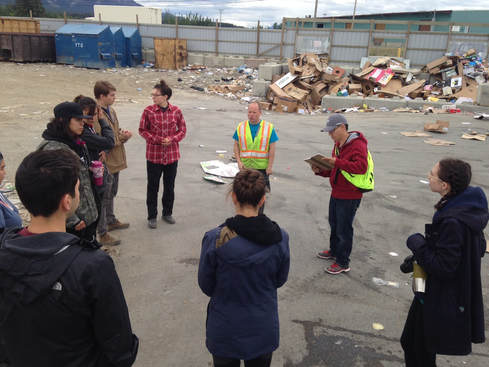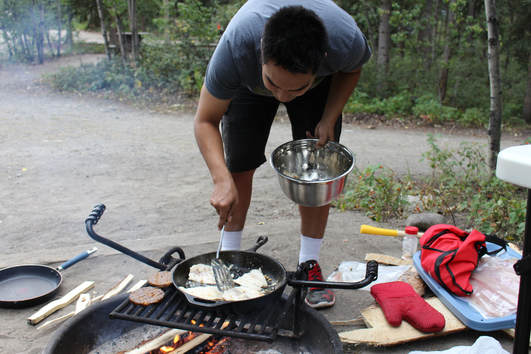|
To finish off their week-long summit, the young leaders of the 2017 Young Leaders Summit on Northern Climate Change held a press conference at which they made a declaration for climate change action. After their presentation, a few participants got to speak to the press about their experience! They did an awesome job of talking about what they gained through participating in the summit. Listen to their interviews with CBC Radio!
Our first stop of the day was the Da Ku Cultural Centre. Our guide Sheila Kuhniiruk discussed the history of the Champagne and Aishihik First Nations people and their relationships to the park and the land. She showed us traditional tools and clothing used by their people for many years, and reinforced the importance of having respect for the elders and the land, who have guided our growth.
Samuel Turcott provided additional information about Kluane National Park. Did you know that Canada and the US share a 2nd highest peak: St Elias? After a quick visit to Village Bakery, we stopped at Silver City, where we continued a discussion of climate change impacts and what is needed by youth in order to address these issues. Then the dust began to roll in… On the shores of the Kluane Lake and Slims River, we experienced the impact of the receding Kaskawulsh Glacier. With the water dwindling to the Pacific instead of the Bering Sea via Kluane Lake, this has caused the lake and shorelines have receded dramatically! Now, a significant portion of the lake and river bottoms exposed to the Slims Valley winds. The fine glacial sediment now blows, creating large dust clouds, changing the surrounding landscape. At the Kluane Lake Research Station, two researchers from Squirrel Camp shared highlights from their long term research from a monitoring program on the snowshoe hare and red squirrels. They noticed the increased risk to survival as they rely on camouflage to stay hidden from predators. As the seasons cycles become more variable and inconsistent, the hares’ fur doesn’t change with the seasons as it once did. Dr. Matthew Ayre then led us back to the past to discuss his unique research of using old whaling log books to map polar ice caps. Bowhead Whales lived at the edges of ice packs where their food was; therefore these whaling log books are able to be used to create a map of sea ice prior to the existence of satellite imagery. Kwanaschis to all the speakers today! How would you survive in a -62C winter?
Seven layers of caribou hides with the fur facing inwards packed with snow on top. This is the technique that the northern youth climate change leaders learned was traditionally used by the Indigenous people of the region at the Long Ago Peoples Place near Haines Junction. Meta and Harold have noticed changes in their traditional land due to climate change. There are more insects, aphids killing aspen trees and no strawberries this year. Climate change is changing the traditional ways of life in the North. Our first day of presentations was a day of making connections for me. A common experience in these types of Northern communities, it was an exercise in intersectionality, with many different perspectives and topics being presented. While I had explored all topics before, through my academic and career work and personal interest, I loved the opportunity to run through my mental library and pull out things that paired with concepts brought up today. Below my resource list with corresponding presentations from the great guests we had:
Raven Recycling: More emphasis needs to be placed on reducing and reusing, especially when it comes to plastic. Personally, I have been working to plan a build of a reprocessing machine for use at my place in Inuvik. Plans and blueprints are available, open-source, from Precious Plastics. I hope to build an extruder for melted plastic that can create filament for use in my 3D printer. Scott Slocombe: Discussion of land management in the Kluane region is relevant to my work with the Gwich’in Land and Water Board and other co-management boards in the Mackenzie Valley. The Mackenzie Valley Environmental Impact Review Board has a great overview document of Environmental Assessment, available in English, French, Gwich’in, Slavey, etc. Discussing Food Security at the Arctic Institute of Community-Based Research:
During the meeting with Norma Kassi (Co-founder and Indigenous Collaborator), Katelyn Friendship (Co-Director), Molly Pratt (Communications and Research Coordinator), and Jody Butler Walker (Co-founder and Co-Director) covered the topic of food security in terms of traditional food that is available now, and future plans of tackling the issues of dwindling traditional food sources due to climate change and the effects that is has on migration routes, food sources for the animals and the changing temperatures. We also talked about alternative food sources in the case we do lose the traditional food sources, such as community gardens. |
Archives
September 2017
Categories |
